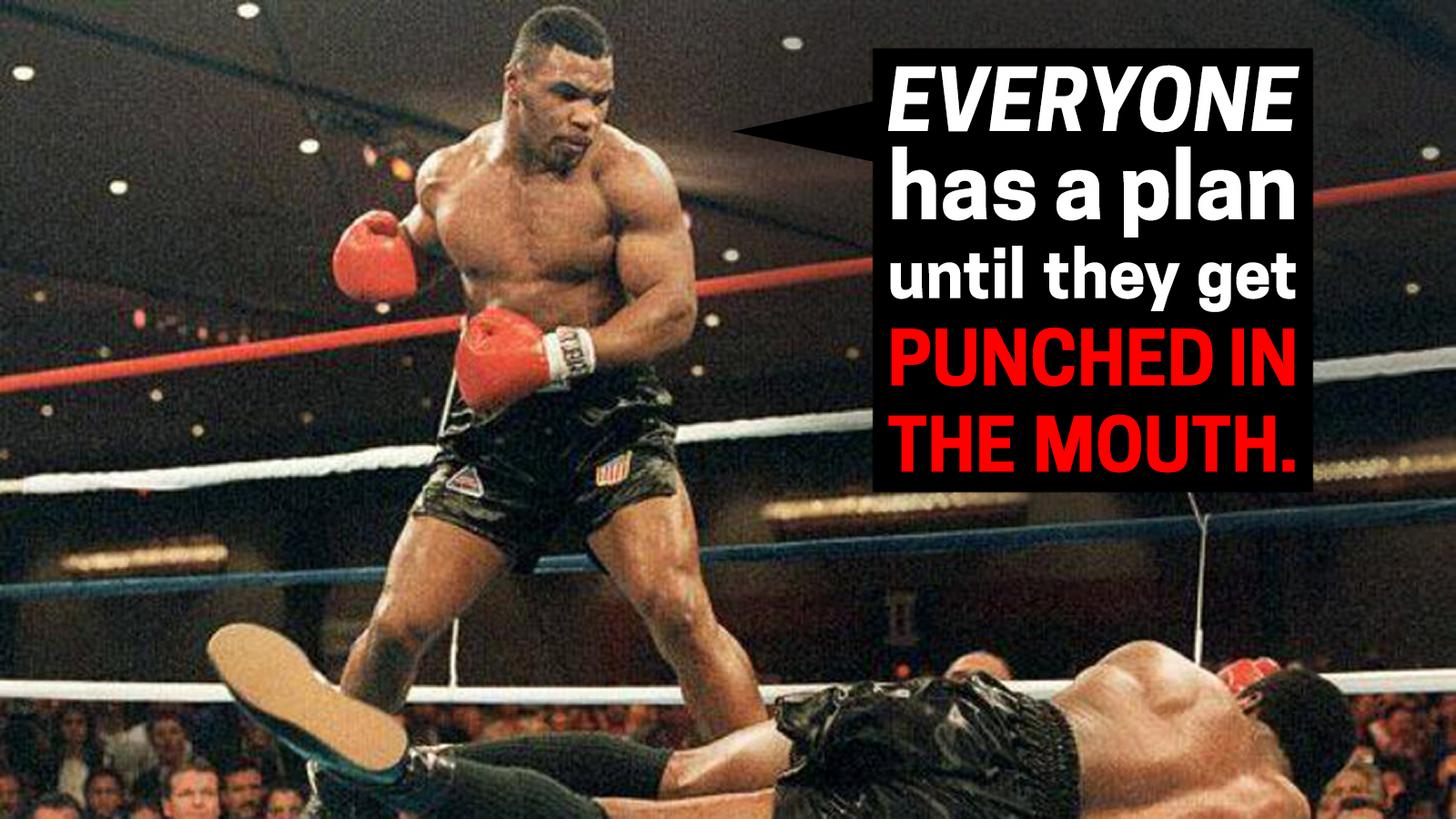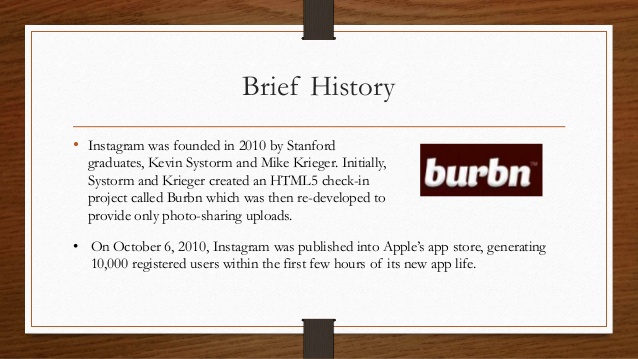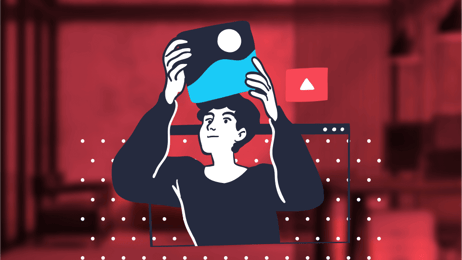-
Introduction
-
What is a Lean Startup?
-
The Goal of a Lean Startup
-
Step 1: Commit to Lean
-
Step 2: DOCUMENT YOUR BUSINESS MODEL
-
STEP 3: CUSTOMER-DRIVEN DEVELOPMENT
-
Three Approaches to Customer Development
-
Step 4: Establishing Problem/Solution Fit
-
STEP 5: LAUNCHING SMALL TO DELIVER (AND CAPTURE) VALUE
-
An Exercise in Product Development: Measure For a "Must Have" Product
-
STEP 6: Become Remarkable
-
STEP 7: Find a Revenue Model That Works
-
STEP 8: CONFIRMING PRODUCT/MARKET FIT
-
STEP 9: SCALE GROWTH
-
STEP 10: CONTINUOUS INNOVATION
-
FINAL STEP: GET STARTED AND/OR GET HELP

10 Steps to a Lean Launch
Introduction
Congratulations!
You're launching a new idea, and you're looking to make it successful as soon as possible. An exciting journey awaits and if you're like most entrepreneurs, you're working day and night to see it through.
Along this journey, there are peaks and valleys, as well as dangerous cliffs and divides, that must be navigated properly to reach the summit. Sadly, only a small percentage of companies survive this journey. Most come to a gap, and without the skillset to build a bridge, they simply leap for it. They take their best shot and hope for the best.
Some make it! But, most aren't so lucky. This cycle of epic failure is what started the lean startup movement. Entrepreneurs like Steve Blank, Eric Ries, Ash Maurya, and others, were having nightmares about their experiences. They decided there had to be a better way, one that involved less risk.
This cycle of epic failure is what started the lean startup movement. Entrepreneurs like Steve Blank, Eric Ries, Ash Maurya, and others, were having nightmares about their experiences. They decided there had to be a better way, one that involved less risk.
The idea was to focus less on the leap and more
They devised a toolkit that enabled them to build a bridge to their target market. The bridge not only takes them to the other side, but it enables them to cross back and forth with new versions as many times as needed to find the ideas to which their target market responds.
This toolkit has helped countless entrepreneurs and their startups survive the journey. It started a movement of building bridges to cross the chasms that have caused so many others to fail. Many startups have found their tribe because of the process formed by these leaders.
I owe a debt of gratitude to the work of Ash Maurya, Eric Ries, Steve Blank, Alex Osterwalder, Sean Ellis, and Trevor Owens, as they have been my mentors (through their books and workshops) in successfully applying a lean methodology within my company and my client engagements as well.
But there's a problem.
As much as lean simplifies the journey and minimizes risk for
In many ways, they're right.
My lean startup journey has included more than a dozen books, several workshops, and five years of trial and error.
Here are a few of the valuable lean startup books available:
- The Lean Startup, by Eric Ries. 334 pages.
- Four Steps to an Epiphany, by Steve Blank. 370 pages.
- Running Lean, by Ash Maurya. 240 pages.
- Value Proposition Design, by Alex Osterwalter. 388 pages.
- The Lean Enterprise, by Trevor Owens. 253 Pages.
Will these 1585 pages teach you everything you need to know?
No.
There are several more books and courses I recommend as must-have information. They include Nail it, then Scale It, The Icarus Deception, and Inbound Marketing. The Customer Factory, a new book by Ash Maurya, is also one you’ll want to read.
Does this list of reading overwhelm most entrepreneurs before they even get started? Yes.
I’ve talked to a lot of startup founders and co-founders who see the lean startup methodology as too steep of a learning curve. They prefer, surprisingly, to go for the “leap” and just “hope for the best.”
In reality, they are gambling, and with a startup, the stakes are too high.
This is a huge problem that needs to be addressed - which, brings me to the purpose of this book.
The purpose of the [Lean Launch] is to give you a vision for how the lean methodology can guide your startup from concept to high growth. Whether you consider yourself an entrepreneur, co-founder, partner, or employee, my goal is to prime you with the concepts for each stage of developing, launching and growing a new venture.
It's the simplest way to understand how lean can be implemented in each phase of a startup. And most importantly, it provides an actionable guide for knowing when to proceed from one step to the next.
This book was developed using a lean launch methodology:
- It started as an idea that I tested in the market.
- I floated the concept as a smoke test, and after 200 people signed up to read it, I determined there was sufficient demand to write it.
- While writing it, I received more than 100 additional requests for the book. I pre-released each chapter to ~325 first adopters, gathering valuable feedback so that I knew what to revise in order to deliver a value-packed book entrepreneurs could read, understand, and use to instantly take productive action.
- Because I chose to get customer feedback very early in the process, I was able to use reader comments and questions to improve my book before I even completed writing the final sections. I was able to apply revisions that addressed common questions asked by my target audience before I was even done writing the final chapters.
If you would be so kind as to send questions and feedback, I'd greatly appreciate it. I'll respond to your inquiry personally, so if something doesn't make sense or you're feeling stuck, contact me, and I'll do my best to find the time to help you through it.
Okay, let's begin...
CHAPTER 1
What is a Lean Startup?
I think one of the biggest obstacles to adopting a lean methodology is confusion on terminology.
- What's the difference between a startup and small business?
- What makes lean different than agile?
- How long does a company have to last before it's no longer a lean startup?
By starting with defining our terms, we aim to resolve the confusion.
Lean Startups Aren't Always New Ventures
It's common to think of a startup as a tiny company in its first weeks or months of existence. It's also common to imagine a startup as two guys in a garage, bootstrapping with limited resources.
It's true; this is a rather common
A lean startup is not simply a new company. A lean startup is when you use the lean methodology to develop and launch a new idea for minimum risk and maximum learning.
Critical Definitions:
Lean Startup vs. Small Business (SMB):
Is every newly founded small business a lean startup? No.
Is every lean startup a small business? No.
A small business is basically a small version of a large company. Small businesses are focused on branding, revenue, and growth.
A lean startup has a different focus. While it may be small, it does not operate like a small version of a larger company.
What Is a Startup?
Eric Ries, the author of The Lean Startup, says "A startup is a human institution designed to deliver a new product or service under conditions of extreme uncertainty."
For a full understanding of his definition, read Eric's full post.
Lean vs. Bootstrapping
The idea of launching on limited resources is more "bootstrapping" than lean.
Lean is a customer-value focused methodology that is more about minimizing risk than working with small budgets. Minimizing risk is accomplished through validating your business model before you build or launch your product.
What Does Agile Mean?
Agile methods are focused more on the process of product development than methods of customer development. While a "release early, release often" approach to product development makes you agile, it does not necessarily make you a lean startup.
What is a Lean Startup?
A lean startup practices using continuous learning from a target market to develop, launch, and scale a "high demand" product or service to satisfy that market.
Lean emphasizes customer value over product value.
A lean startup realizes that failed
The lean methodology of continuous innovation and product development through rapid learning cycles. Customer feedback takes a
CHAPTER 2
The Goal of a Lean Startup
If you asked 100 entrepreneurs what the goal of a lean startup is, their answers will vary about 100 different ways.
Popular answers will include:
- Establish a customer base
- Generate revenue
- Earn a profit
- Build a great product
- Quit my day job
- Etc..
All worthy goals, but none of these should be the focus of a startup.
The Best Goal for a Lean Startup: Find a Working Business Model
That's when some entrepreneurs respond, "I have a working business model because I have ___."
Here you can
None of these great things confirm that you have a working business model.
This, of course, sets up an important question: How do you know when you have a working business model?
Answer: You’ll have measurable evidence of increasing traction in the marketplace, trending towards major momentum.
This phase of growth is what we call "product/market fit."
It's when your business starts to take off. Sign-ups, sales, and referrals are happening at an increasing or exponential rate. It's the moment when the hockey stick graph starts to turn upwards. It's when a startup is ready to scale its growth and become a "real" company.
It's common for startups to assume they have traction and "product/market fit" way too soon. When this happens, focus switches to the ability to support a horde of customers that never show up.
Here are common false-positives for the traction you seek:
- Your friends or network of successful entrepreneurs tell you that your idea is great.
- You have existing customers asking for a new product/service to compliment your existing solution.
- You have adequate funds to launch the business.
- You have built a large customer list, and they're responsive to your pre-sell campaign or Kickstarter.
- You've sold your new product/service successfully several times, and you have a great marketing game plan to bring more customers.
These are all positive indicators, but none of them indicate that you have product/market fit. Not even all five of the above false-positives together qualify as product/market fit.
Until you experience hockey stick style growth, you're still seeking product/market fit.
The goal of the lean startup is to systematically take you through the process of achieving product/market
The Three Phases of a Lean Startup
Phase 1: Problem / Solution Fit
This phase answers the question: Is this business centered around a problem worth solving?
This phase can take a few
Phase 2: Product / Market Fit
Phase 2 is designed to answer the question: Is our product a solution people want?
This phase can take several months, or even several years.
This is the phase where so many companies get stuck, lose focus, or completely fold.
Being in business several years does not mean that you've achieved product/market fit. Product/market fit is confirmed when you experience a significant and sustained upswing in growth, signifying the need to scale.
If you're not growing month-over-month, and quarter-over-quarter, with a growing army of customer advocates, you still do not have product/market fit.
Phase 3: Scale
Phase 3 is when a business has great traction in the
It focuses on questions like:
- How do I accelerate growth?
- Where are my bottlenecks and how do I eliminate them?
- How do I maintain customer satisfaction and retention while my company experiences exponential growth?
- What changes will need to be made in my product and my brand as I shift focus to the early majority market?
This is the phase you want to last as long as possible.
The Lean Startup Process
This book breaks the three key phases of launching a startup into a 10-step process. When you've completed all ten steps, you'll have launched a profitable, scalable startup.
There are three continuous improvement loops built into this book.
- Steps 1-4 are the guide to achieving Problem/Solution Fit.
- Steps 5-8 are the
roadmap to Product/Market Fit. - Steps 9-10 are the model for scaling growth in a Lean Enterprise.
Here's a look at the steps we're going to take together.
The 10 Steps to a Lean Launch:
- Commitment to the Lean Methodology
- Documenting the Business Model
- Customer Driven Development
- Testing for Problem / Solution Fit
- Delivering (and capturing) Value
- Delivering a Remarkable Brand Experience
- Finding a Revenue Model that Works
- Measuring for Product / Market Fit
- Scaling your Growth
- Creating a Culture of Continuous Improvement
Let’s get started following an exciting, proven methodology for your startup!
Chapter 3:
Adopting Lean
Step 1: Commit to Lean
A common myth assumes that companies are started by visionary entrepreneurs. Those who see an opportunity and can visualize the perfect way to capitalize on it. It all comes together naturally and, five short years later, Google buys it for $966 million dollars.
Sure, there are a few of these stories, but I wouldn’t base my business strategy on the assumption that this is the norm.
Another myth is that entrepreneurs think that it’s about the idea - as long as they have a great idea, the business will be successful. The majority of startups that fail, sadly, had good ideas. They just lacked the messaging, marketing, proper buying journey, necessary finances, or something else.
It’s important to understand that startups with great, even brilliant, ideas fail all the time. The “billion dollar idea” startup that miraculously happens without struggles or challenges is a fairytale.
It doesn’t happen.
Most startups are launched by determined entrepreneurs who feel they have identified an opportunity that is real, marketable, and scalable. Once the idea is well defined, they
The problem with this approach is that the business plan is actually full of assumptions - ideas that sound good on paper but lack proper validation upon which to base a business. At the end of the day, the business plan deserves to be categorized more as a work of fiction than a business blueprint.
Meanwhile, an unlimited supply of determination can't make up for a flawed business plan.
Why 90% of Businesses Fail:
Unforeseen Problems
Ninety percent of businesses fail because their business plan is full of risk and uncertainty. Their product, marketing, and budgeting are largely based upon faulty assumptions about how things will go and what will work.
Very few of these ideas get validated prior to pushing forward with the business. All it takes is for one wrong guess not to pan out, and poof! The business model has failed.
Only an unplanned pivot can save businesses at this point of failure, and often times the entrepreneur doesn’t even realize it. Too often, they push forward with determination until they run out of resources.
Unhealthy Belief in Your Idea
One thing is certain, entrepreneurs have a great amount of creativity, confidence, and determination.
Creativity is required in order to dream up a solution to a problem large
Confidence is required because the entrepreneur must believe he is uniquely qualified to deliver the solution, as well as, build a company around this model.
Finally,
In the words of Jimmy Dugan (Tom Hanks, A League of Their Own), “It’s supposed to be hard. If it wasn’t hard, everyone would do it!”

Instead, the entrepreneur, in love with his ideas, rushes to market to deliver his idea with all the resources and speed he can muster. If he happens to stumble upon a scalable growth model - he experiences success.
If it doesn’t work - failure (often in the form of bankruptcy).
Reality Check: Business Risk
It's absolutely true that starting any business puts your time and capital at risk.
There are no guarantees of success.
In fact, the deck is clearly stacked against you. Only a few players win.
Warning: Don’t Treat Entrepreneurship Like Gambling
Just because there's risk involved doesn't mean that the market rewards casino-style entrepreneurship. Going “all in” on an unproven idea is gambling, plain and simple. But in this case, the failure doesn’t stay in Vegas.
This failure hits close to home and impacts a lot of people.
Speaking of Vegas, consider how blackjack, roulette, craps, and other casino games, have odds of winning far higher than the 10% odds granted to startup success. The trick is to never treat your startup like a gambler, rolling the dice to see what happens.
While going “all in” on a startup is exciting, just like gambling, remember that most trips to Vegas result in massive financial losses, and only a few great stories. It’s the one-in-a-million winner that gets promoted in the marketing for the casino. Why? Because it attracts another million losers to the casino.
Basing your startup model on a once in a lifetime success story just isn’t smart. I hope you’re looking for a lot more from your startup, so let’s find a better way.
If your business is built upon invalid assumptions, you’re not investing. You’re throwing a dart at the wall to see if it happens to strike a bullseye. Continuing to spend capital just means you are buying more darts.
No wonder attracting investors is so difficult! They’re not willing to gamble on assumptions like most entrepreneurs are.

Once I was asked what I'd call a startup that wasn't a lean startup.
I didn't have an answer.
However, after spending a few hundred hours writing this book, I have one: A startup that isn't a lean startup is an assumptive
Startups Risk More Than Money
Even worse than the odds of launching an assumptive
Time.
The two-to-five years lost launching a failed business hurts even more than the financial failure. Now imagine, what if two or three ideas in a row fail?
How old will you be?
How much opportunity has passed you by?
Can you recover?
There has to be a better way.
What if there was a way to find out if your ideas and assumptions were valid before you made significant investments?
What if instead of learning costly lessons through hindsight, you could straighten the path to a successful startup with foresight?
What if we applied a different approach?
Re-thinking the role of a startup
The role of a startup is not to rush to market with a bunch of assumptions and see if it works. The role of a startup is to commit to de-risking its assumptions through a series of conversations with customers.
The startup uses these conversations, and other feedback, to test ideas until it identifies a business model that works.
As Eric Ries says,
"If your plan is to launch and find out what happens... you're 100% guaranteed to succeed... at finding out what happens."
The Startup Solution: Commit to Lean
If you’re interested in de-risking your startup and improving your business model prior to making a significant investment, lean might be the launch model for you.
But understand that the decision is not whether to “like”
Instead of going “all in” with assumptions, you need to go “all in” with Lean.
Chapter 4:
Step 2: DOCUMENT YOUR BUSINESS MODEL
The first truth about startups is that ninety percent fail. This is largely known.
The second truth about startups is largely unknown: two-thirds of successful
If 90% fail, and 6.7% radically change their business plan, only 3.3% of businesses start with a winning plan.
A successful startup can’t focus on creating the perfect business plan with the assumption it will work as imagined. Instead,
The odds are against you getting it right the first time. It's 97% likely that your first product idea will be wrong. Don’t think of the need to shift focus as a failure. Improving upon your original idea is the most effective way to find a business model that works.
Consider how well-known success stories all feature a major pivot. Facebook, Groupon, and PayPal all pivoted before they found traction in the marketplace.
If they had been inflexible, we might have never heard of them.
A few years ago, a young startup, ThePoint, assumed people would like an app that helped them crowdsource projects. It was like a Kickstarter for real life.
Soon, they had exhausted their resources and wasted about a million dollars on that assumption.
On the brink of failure, the founders decided to apply principles of ThePoint to purchasing discounted goods/services. After one successful test selling pizza coupons, they decided to pivot.
Today, Groupon is wildly successful - even helping countless other companies find their own success in the marketplace.

When planning your business, expect your plans to change.
Being nimble and willing to shift to what works is the golden key to success.
Your current plan may play a key role in your success - it might lead you to the plan that really works!
How To Plan:
“Everybody has a plan until they get punched in the mouth.” - Mike Tyson

Two common routes to establishing a business model:
Traditional startups create a "business plan," or a "pro forma," where they invest time creating a detailed plan to forecast how the business will grow.
Lean startups don’t create business plans, nor do they waste their time on a pro forma. Instead, they focus on a business model canvas.
Let's explore the pros and cons of each.

Option 1: The Business Plan
Choosing this option means spending several months writing a detailed business plan that tries to consider and account for all kinds of situations and scenarios. The positive is that you'll have spent months thinking about your business idea, developing some of the details and thinking through some of the likely problems.
Here are some common business plan resources and templates:
- Business Plan Template from Entrepreneur.com (31 pages)
- How to Create a Business Plan (by the U.S. Small Business Administration)
- Over 500 Sample Business Plans (wow, that's a lot of samples to sift through)
The largest benefit of creating a business plan, in my opinion, is that you are forced to consider important questions before you invest in launching your product or service.
You'll be documenting your financial plan, target demographics, revenue model,
These are important considerations to plan for, and business plans provide structure for this.
Before you dive into creating a traditional business plan, let's look at some of the downsides of this approach.
5 Problems With the Traditional Business Plan
- It can take months to create.
- Few people refer to it for information after it's written.
- Nobody else reads it.
- It’s full of assumptions - basically, untested fiction.
- It has a 66% chance of changing drastically, even after it makes it past the 90% business failure rate.
Are you dedicated to spending weeks rewriting your business plan every time you need to make a change?
Probably not.
This is because detailed business plans and startup pro
Option 2: The Business Model Canvas
What if you could create a single-page document that effectively outlines the “Plan A” business
We’ve found the business model canvas to be a more effective option.
Not only does it give you a clear resource for company goals and values, but it empowers agility as well - a necessity to find the most viable market fit for your company.
Five Benefits of the Business Model Canvas
- It's easy to reference later - as it's a one-page document.
- It's easy to share - cultivating valuable conversations.
- It’s easy to iterate - enabling frictionless idea exploration.
- It saves months you may have otherwise spent drafting a business plan.
- It facilitates change - keeping you from falling in love with a plan and pursuing it at all costs.
The number one, knee-jerk objection to the Business Model Canvas is disbelief in its effectiveness. Some people have a hard time understanding how you can put an entire business model onto a single page. However, it has been done, and with great success.
The downsides of the business model canvas are
The point of the business model canvas is to quickly hypothesize a business model that you think has the potential to work, and then go to work validating that hypothesis.
Without the validation phase, the canvas itself loses its value.
The Two Flavors of the Business Model Canvas:
We use the Lean Business Model Canvas, available from LeanStack.com. It’s derived from Alex Osterwalder’s business model canvas (which is often preferred for larger, more established companies).
To read more about how the business model canvas compares and contrasts with the Lean Canvas, read Why Lean Canvas?
Chapter 5:
STEP 3: CUSTOMER-DRIVEN DEVELOPMENT
You would think that once you’ve documented what you believe will work, it's time to get started building the solution, right?
Nope!
This is not the right time to start solving problems.
First, you need to confirm that the ideas you have about your customers and their problems are correct. You must talk to real customers and learn how they view their problems, how they solve them
You may be asking yourself, "Why talk to customers now? I've got nothing to sell." But, nothing is quite as deadly to a business idea as faulty assumptions about customers needs and wants. Countless businesses have spent years building and marketing products that nobody wants. By the time they learn about their flaw, they have consumed most or all of their resources, and it's too late to pivot.
For a business to
Knowing if an assumption is false in the beginning gives a business time to adjust before wasting time and money on an idea that was destined to fail.
Turning Faulty Assumptions into Radical Success
At one time, there was a company called Burbn, built on the assumption people would like to check-in at their favorite places. This assumption wasn’t exactly wrong, but they did discover users preferred sharing pictures over checking in.
Eighteen months after their pivot to photo-sharing, Burbn was sold to Facebook for a billion dollars. Today we know it as Instagram.
 Warning: Your Ideas Could Be Horrible!
Warning: Your Ideas Could Be Horrible!
There's no way to know whether your idea is a waste of paper, or if it is hinging on
Eventually, you'll collect customer feedback. For traditional companies, it comes in the form of sales and revenue. It's not a matter of if you need customer feedback, but rather when you will collect it.
How long would you like to wait until you have customers telling you whether or not you're on the right track?
Instead of staking your kingdom on the assumptions you’ve placed in Plan A, you can test the ideas immediately. Find out from the marketplace whether your one-page business plan is full of validated assumptions or creative fiction.
“Startups operate under conditions of extreme uncertainty.” - Eric Ries
Early course corrections are nearly painless, and they significantly reduce the risk of failure. They eliminate some of the uncertainty of your startup by collecting evidence to support which ideas work best, and which ideas don’t work at all.
If you've already built your solution when you learn what customers want, it may be too late!
Do Not Pass Go - Do Not Collect $200!

Real life isn’t won like the board game, Monopoly - building hotels that capitalize on the chance someone stays in them.
Real life is won by finding out what kind of hotel the other players want to (go out of their way to) stay in. Then, you build that.
Losing a game of Monopoly is one thing, but don't "roll the dice" with your startup.
Don't take unnecessary risks by focusing on your solution before validating your business model. Rather than racing forward investing in, developing, and marketing your product, take a minute to collect realistic and reliable data that verifies your product has a chance of success.
Testing your Assumptions & the Scientific Method
There's a five-step method for testing your assumptions by forming a testable hypothesis and collecting feedback from your target customers.
- Identify the riskiest assumptions with your business model, assumptions that, if proven wrong, would invalidate the business.
- Form a testable hypothesis about what you believe to be true.
- Your hypothesis must be falsifiable. Meaning, you have to be able to prove your hypothesis true or false.
- Decide upon the minimum result necessary for success, before you start testing.
- Get out of your office and talk to customers to find out if your hypothesis is true or false.
It's not about finding a customer who agrees with you, but it is about talking to a large sample size of potential customers and confirming that X% agree with your hypothesis.
Example Hypotheses:
- Some people want a limo over a cab. - Poor
- 6/10 executives leaving the Kansas City International Airport would prefer a limo over a cab. - Good
Example Validation Experiment:
Executive Appetite for a Startup Limousine Service
If you're thinking of creating a new limousine service, you may want to spend a little time talking to executives at an airport to confirm if they would be interested in taking your limo.
They're easy to talk to, they can be found near the taxi line at the airport. A simple chat with ten executives over a three-hour period will prove you if you're right or wrong.
And if you're wrong, isn't now the time to find out?
Tips for Talking to Customers:
Don't simply pitch your idea after asking them about their problems. Collect feedback on all elements of your business model, including their challenges to your solution.
This is where true learning happens.
- Dig into the pain they experience. Identify the problems and costs this problem causes, and how they currently solve it.
- Understand why they solve the problem the way they do. If they express interest in your solution, find out why. Confirming interest is just part of the equation. Understanding why is much more important.
- Ask them what they see as the most valuable features and benefits.
- Discuss your proposed minimum and maximum pricing.
- Find out what their concerns would be with trying your product.
Once you've gathered this information, it's almost guaranteed your ideas will improve. You'll start making iterations (small improvements) to your business model and adjusting based on what you've learned.
If your hypotheses were proven false, you may need to pivot (make more substantial changes) and then test those new ideas.
The emphasis in this phase is not having everything seem perfect for the customers you meet. The focus of customer development is testing your assumptions quickly and adjusting to what you learn.
Once your assumptions are proven true, start building and testing your solution. Just know that each step should be highly iterative.
You will probably fail several times before finding the right approach.
Why talk to customers now, with nothing to sell?
If consumers are not interested now, before you have anything for them to buy, you will likely have a difficult time selling the complete product to them as well.
If you can't find ten prospects to engage with, how will that change after you've built your product?
Isn't identifying how to talk to ten potential customers now a great pre-test for knowing where you'll find customers later?
Don't delay the process of learning from consumers. In order to develop your business around your target customers, you need to get out of the building and start engaging prospects immediately.
Customer Development Can Change Everything
Steve Blank wrote an article about his friends Jorge Heraud and Lee Redden. They wanted to build robotic lawn mowers for commercial spaces. But, after spending ten weeks talking to more than 100 customers, they found out even golf courses didn't want their product.
Then, they talked to some farmers. They discovered a need for some kind of way to automate killing weeds, only without using chemicals. That became their new product.
Ten weeks later, they were testing a prototype. Nine months later, they received more than $3 million in venture funding.
Their goal was to have their product launched within nine months. But, they would have already folded if they had launched their initial idea without testing.
Breakthroughs are Found in Failures
A lot of startups think the goal is to create customer development experiments that succeed. In reality, your goal is to find the failures fast.
You see, it's in the failures that you have the opportunity to learn and correct. Finding failures fast can save weeks, months, or even years compared to blindly prodding forward, learning
When an idea fails its validation test, don't freak out! This is a learning opportunity.
This is what the Lean Launch is all about.
Chapter 6:
Three Approaches to Customer Development
1. The Mafia Offer
The Mafia offer is when you go directly to your customer and speak to them about your idea.
You make it plain that you're trying to learn about them, their problems, and what it would take to become their solution provider. By understanding their needs, motivations, and fears, you can start crafting your plan to become the new, mafia boss.
During this 1-1 interaction with your target customer, dig deep with the "5-why" questions to truly understand them.
2. The Smoke Test Offer
Smoke test offers are simply this: an offer without the product behind it. After all, if you can't get people to respond to a "rainbows and unicorns" make-believe offer, how are you going to sell the real one, which will almost certainly have something imperfect about it?
Whenever you get responses to smoke tests, always ask why they're signing up at this time.
3. The Pre-Sell Offer
Pre-sell offers attempt to capture value from your customer in order to measure interest. The value you collect can come many forms, such as an early bird/pre-sale pricing, or as simple as asking them to provide their email in order to receive a notification upon release.
It's important to test your ability to pre-sale a product so that you can start building your list and confirm that you can appropriately target and convert customers before you endeavor to build an elaborate solution.
As with mafia offers and smoke tests, always ask customers why they're taking part in the pre-sale. Knowing what made them want to buy now is valuable for future marketing.
3 Great Ways to Pre-Sell your Startup
- Start a Waiting List
- Launch a Kickstarter Campaign
- Take Pre-Sell Orders Directly
Are there more ways to pre-sell your startup? Yes, of course.
You could sell just the first phase of a larger product or service not yet ready to deliver.
You could look for investors to fund your build phase.
You could ask for small deposit payments in order to secure a position in line for the product.
The point is, pre-selling enables you to capture value from your customer while also measuring the level of interest from your target market. Pre-selling is a great test to see if you're able to activate your target market. If you can't effectively pre-sell your product to a small group of passionate early adopters, what will fundamentally change their level of interest after you've built your final product?
Chapter 7:
Step 4: Establishing Problem/Solution Fit
The goal of this previous step (Customer Development) is to determine that you've identified a problem worth solving and that customers have sufficient interest in the solution you're proposing.
There are three primary ways to establish Problem/Solution Fit, each of which
Intro to the 10x Approach
To establish a Problem/Solution Fit with your target market, work backward from your goals to calculate the type of response needed from just 1% of your target audience.
3 Steps to the 10x Approach
Step 1: Set a specific, measurable, attainable goal for where you'd like your company to be in 2-3 years.
How many customers will you have and what amount of revenue would that generate for your company? Let's say you'd like to be generating $500,000 per year, and in your business, this will require 2,000 customers.
Step 2: Divide your goal of 2,000 customers by 10.
If you were able to obtain your first 200 customers in the next six months, you'd have established traction in the market with momentum towards reaching your goal. Now, a lot of startups start focusing on getting customers in order to achieve this goal, but let's focus on the task at hand, which is establishing Problem/Solution Fit.
Step 3: Divide your "first release" goal of 200 customers by 10, and focus on conducting interviews with 20 "typical" early adopters.
The goal here is to find your first customers, people who are as passionate as you are about the problem you're trying to solve. The goal is to get 20 enthusiastic adopters to sign up for your solution.
You may be thinking, "but I don't have a solution yet," and you'd be right.
So here's how we're going to proceed:
#1: Direct Customer Acquisition
If you successfully acquire 20
If you're marketing an innovative form of massage therapy for athletes, literally ask 20 target customers to allow you to use them as guinea pigs in return for feedback regarding your solution. If it's possible for you to do at this stage, the goal is simple, find and delight 20 customers.
#2: Measure for Sufficient Market Demand
Sometimes you can't sell your solution this early in the process. You may need to manufacture a product first. In this case, you'll want to establish that there is sufficient market demand for your solution before you worry about building it.
Because we're targeting 20 customers, and we know that not everyone who has an interest in learning about your product will buy, we're going to focus on generating 200 interested leads as a measurement of sufficient market demand to justify proceeding to the next phase of the Lean Launch process.
#3: Collect Sufficient Funds from Customers
If you can't gather customers now, and if gathering leads
If you can gather enough backers to manufacture and deliver your first run of 100 units, then use the proceeds to fund your second run of 100 units, you may well be on your way to problem/solution fit.
Kickstarter is a great platform for attracting customers to back your product.
How to Know If You Achieve Problem/Solution Fit?
Have you acquired your minimum quantity of customers, leads, or backers?
Have they indicated a strong interest in your solution to their problem?
If so, congratulations on achieving problem/solution fit.
Now it's time to start delivering value to your customers.
Chapter 8:
STEP 5: LAUNCHING SMALL TO DELIVER (AND CAPTURE) VALUE
Now that you've collected sufficient evidence that you have identified a problem worth solving and you have a group of customers interested in your solution, it's time to create
First focus on early adopters, customers who need your product the most. Feedback from them produces valuable learning, and they'll tell you how they use your product and how it does (or doesn't) solve their problems.
The goal is to find traction - evidence your target customers care about your product.
Once traction is found, building a successful business is much easier.
In Groupon’s case, validation came from a quick test for a pizza company in their own office building. Selling 20 coupons wasn’t a huge business success, but it proved that their target audience was interested in that business model.
Finding validation turned a company from certain failure into an amazing success thousands of entrepreneurs would love to duplicate.
Lean Product Development
Rather than going all in and investing huge on your first product, start off with the smallest solution to validate its viability.
Build a minimal version of the idea, then test it against real users as quickly as possible.
The lean methodology calls this pre-release minimal product your "Minimum Viable Product," or MVP.
Launching a minimum viable product allows you to validate that your new product or service fits your market before a huge investment; effectively negating major risks.
Wait, why are we validating assumptions again?
In step 3 (Customer Development), we validated assumptions about customer problems. With the MVP, we're validating a different assumption: proving your solution solves your customer's problems in a way that interests them.
How to Build a Minimum Viable Product (MVP)
The goal of an MVP is to deliver value to customers and capture value from them in return, which validates their interest in your product.
The MVP is the minimum set of features needed to get feedback from early adopters to learn whether or not you're on the right track. Remember, the goal is to get ten initial customers to give you feedback, then to use that feedback to make improvements in your product or service.
Until you can deliver a positive experience to these ten customers, there is no point in working on growth. Don't focus as much on conversion as you do retention.
From the first conversion, track each customer to measure return rate, because the goal is to create a solution that people want.
Example of MVP Success
Zappos is the biggest online shoe retailer, with annual sales exceeding $1 billion.
Founder and CEO, Tony Hsieh's launch wasn't what you might expect from a founder who had just sold his previous company for $265 million. He didn't invest in a warehouse, a million pairs of shoes, or even an elaborate website. Instead, he went to local shoe shops and asked the owner’s permission to take photos of shoes and put them online. When a shoe was ordered on his site, he went back to the shoe shop, bought the pair that was ordered, and shipped it.
He handled payments, returns, and customer service - everything by himself, and all by hand.
He was testing whether customers would not just buy shoes online, but if they could enjoy the experience. He was gathering customer satisfaction data, return rates, and other metrics to help determine how to launch his company. This experience helped drive not only what he sold, but how - how he sold, how he priced, and how he served his customers.
3 Reasons You Won't Create an MVP
Reason 1: You think that your customers won't get full value from your MVP.
As a result of this fear, you intend to build the full product and hope for the best. If you believe this justifies abandoning the MVP, then successfully build a large list of leads through a “smoke test” launch, first. Then, conduct interviews with those
Reason 2: You think your customers won’t know what they want until they see it.
This may be partly true. So, you should show them the product/service through smoke tests and presales. After all, if you can't find customers now, what will really change after you have your product in hand?
When you find them, interview them and validate all of your assumptions.
Reason 3: You think Lean will take too long.
The "see what happens" approach is guaranteed to succeed... at “seeing what happens.” If you have ample capital to fail big several times, and still feel that you'll be ahead on time and more profitable, then, by all means, go ahead and roll the dice.
If Tony Hsieh can do it, you can do it.
You can get ten customers before you lease a fancy office, right?
Can you commit to finding ten customers that love you before you invest heavily in business infrastructure? Exert some personal effort to find early adopters who would love your product, and then confirm that they do, indeed, love it.
If you can't find and please ten customers, what point is there to building a scalable infrastructure to please 1,000?
Improving the MVP
Customers are particularly good at solving their problems, but not particularly good at telling you how to improve the products that help them solve their problems. What I mean is, customers can give you feedback that feels interesting and valuable in your search for traction in the market, but in reality, it can be just a distraction and noise.
While it’s important not to listen to what customers say about how to improve a product, it’s more important to measure how changes to the product affect customer registration rates, activation rates, retention rates, referral rates, revenue, and lifetime value.
Release Early. Release Often.
As you learn from customers, only make one change at a time. Test each change individually to learn which alterations improve activation and retention and which changes do not.
The goal at this time is simple: develop a product or service that customers want.
Chapter 9:
An Exercise in Product Development: Measure For a "Must Have" Product
The following exercise is a key part of step 5 (Developing your MVP) and needs to be completed successfully before proceeding to step 6 (Become a Remarkable Brand). If you follow the direction of this exercise, you will avoid one of the largest product development pitfalls.
What pitfall am I speaking of?
Many
This is inaccurate. It’s "product/solution" fit at best.
In order to have true product/market fit, you must have a product that fills the needs of the market, and you must have momentum in delivering that product to market.
With a definition so subjective, it's no wonder startups prematurely think they've achieved product/market fit, then move to scale a business rather than iterate on their product.
The first step towards product/market fit is having a "must have" product.
It makes no sense whatsoever to market a product customers don't like. As such, the first step is to gather sufficient evidence to prove you have a product that's highly valuable to your target customer. Only then do you want to worry about mass marketing
Why Validation is Vital
You are not the user. Your solution is your baby, and you view it from a completely different perspective than your customer.
Your target customer may not even understand your solution. As such, it's crucial to understand your earliest customers' perception of your product before you try to scale it to a larger market.
Start measuring your product/market fit as soon as possible. Focus on the product while continuing to learn about your market. The results of this measurement significantly impact the next steps of growing your startup.
If you haven’t achieved product/market fit, it's vital to keep your burn rate
Avoid bringing in VPs of Marketing and Sales to try to solve the problem. They will only add to your burn rate, and likely won’t be any better than you at solving the problem. Instead, engage existing and potential users to learn how to make your product a “must have.”
How to Measure your Product / Market Fit:
There are a number of resources for measuring product/market fit. For the person who wants all the input they can get, here are some resources to get you started:
- 10 Steps to Product / Market Fit (Slideshare and blog post by Ash Maurya)
- 3 Steps to Determine Product/Market Fit (by Will Caldwell via Entrepreneur.com)
- A Simple Guide to Measuring Product-Market Fit (Buffer's Blog)
- The Startup Pyramid (blog post by Sean Ellis)
If you just want the action steps, Sean Ellis has created a simple survey to help measure product/market fit. The results help you determine if you should begin final preparations before aggressively scaling customer acquisition.
Available at Survey.IO, the survey goes like this:
Question #1: How did you discover [your product name here]?
Provide either check boxes or a drop down confirming your most effective conversion sources.
Question #2: How would you feel if you could no longer use [product]?
(This is the most important question for determining how well your product is resonating with early users.)
- Very disappointed
- Somewhat disappointed
- Not disappointed (it isn’t really that useful)
- N/A – I no longer use [product]
Question #3: Why?
Understanding why they answered question #2 is crucial to
Evaluating the Survey Results:
If a lot of customers predict they would only be “somewhat disappointed” without your product, they are really telling you that your product is only a “nice to have.” It’s very difficult to build a business around a “nice to have” product. So, you should keep your burn rate as low as possible while you iterate your core experience to make it a “must have.”
The wisest step is to return to chapter 4, and start improving your product.
Do you have a "must have" product?
If less than 40% of your MVP customers consider your product a "must have," and less than 40% would not be "very disappointed" without it, stop right here. Go back to step 5 and work on improving your MVP.
If more than 40% of users say they would be “very disappointed” without your product, there is a great chance you can build a successful business around it. Now is the time to reallocate some product development resources toward optimizing your funnel and message, as described in the next few chapters.
Chapter 10:
STEP 6: Become Remarkable
The best way to grow is to make your customers go “wow.” Not only do you get higher activation rates and higher retention, but your loyal fan base shares their favorite finds.
As the saying goes, "the flock always finds the best grass." Rather than focus on getting bigger, focus on getting better.
"If you invest your money to create exceptional products and services, you won't need to spend it on advertising." - Seth Godin
The Difference a "Remarkable" Brand Makes
When we use the word “remarkable,” we usually think in abstract terms; much the same as when something is “cool,” or “incredible.”
What remarkable really means, is that something is so amazing it’s worth making remarks about.
Want people to make nice remarks about your brand? You have to make your brand experience remarkable.
Being remarkable isn’t rocket science. In fact, it’s so simple most people skip over it.
Don’t overcomplicate it.
The principle is simple: you must add value and deliver a great experience. Do this well, and you'll be considered remarkable.
What Does It Mean to Provide Value?
Making something at a certain price doesn’t make it valuable. As a matter of fact, value is a relative term.
Remember those “priceless” commercials from American Express? “Air Jordans, $120. Chicago Bulls jersey, $150. Beating your dad in 1-on-1, priceless!”
For the kid in that commercial, playing basketball with his dad was priceless. But to the kid who hates basketball, or whose dad never had time for him, it’s not that valuable.
Elderly people may spend $200 on an old antique appliance they used when they were kids. But, to a kid who just wants a new iPad, the antique washing machine holds no value.
Both the washing machine and the iPad have value. They are both worth something. But value is dependent on the buyer.
Value is literally in the eye of the beholder.
How to Provide Value
If you’re going to provide value to your customers, you will need to understand what is important to them.
Don't focus only on what entices your target customers to buy. Figure out what will touch their heart or give them value they didn't expect.
Demonstrate that you understand them, and make it clear that you're willing to go the extra mile for them.
- Is there something painful they want to take care of?
- Is there something they want?
- Is there something they need?
Whatever their motivation is for buying, you must provide it.
To provide value, you have to over-deliver on their expectations, not necessarily on just the product.
Focus on Experiences, Not Products
Gary Vaynerchuk’s YouTube story is a good example of this principle. To help market his family's wine-making business, he didn’t try to launch all kinds of awareness campaigns about their winery. Instead, he discovered what their target customers wanted, and delivered it.
Gary wasn’t selling wine. He was sharing an experience.
If people just wanted to drink a bottle of wine, or get drunk, the local store down the street has bottles of wine for sale. But wine wasn’t what his customers really valued. They valued the experience of wine, more than the wine itself.
Vaynerchuck simply delivered content that highlighted the experience, and their company flourished because of it.
Discovering Experiences Worth Value
Price is not the primary differentiating factor in buying decisions. This is especially true when competitor pricing is similar. The differentiator must be the experience. The experience is what makes someone choose Brand A over Brand B when pricing is not an issue.
What can you do that your competitors are not doing to delight your customers?
What can you do that will make your users start talking?
You will probably have to do something truly remarkable to become remarkable.
TD Bank made headlines everywhere when they released a marketing video showing their Automated Teller Machine (ATM) transformed into an Automated Thank You Machine.
The video is nothing short of amazing, and of course, it went viral overnight.
When their customers came to do business at the ATM, they had gifts for them. These gifts weren’t random things like iPads or Big Screen TVs; they were personal things.
One example was a baseball fan who received a baseball uniform, a visit with a baseball star, and got to throw out the first pitch at a baseball game.
Another example was a woman whose daughter was battling cancer. Not only did she receive a card thanking her for being a wonderful mother, but she also received airline tickets to Trinidad, so she could visit her daughter.
That’s not the best part of this video, though.
Everyone knows the bank can’t afford to buy presents for every customer. It’s not even the presents that make the video so impactful.
Can you guess what it was?
The bank knew the stories of these customers.
They had been listening.
They took the time to not only provide a valuable service, but to know and appreciate their clients as real people; people with stories to tell.
The purpose of the video wasn't to say "we buy gifts for our customers." It was to say, "we're a bank that actually cares about our customers. We know their names. We know their stories. We care for them. And, we'll care for you, too."
Chapter 11:
STEP 7: Find a Revenue Model That Works
You may be generating revenue, but that doesn't mean the economics of your business are optimized. To prepare for substantial growth, you need to optimize your revenue model to acquire the most users while generating a profit.
Identify and Optimize a Successful Transaction Equation
There are several questions you should answer when optimizing your revenue model:
- What value is the customer paying for?
- Are they receiving this value?
- Will they pay more?
- Is there a smarter way to capture the sale?
- Can I split the purchase into steps that convert better?
- Can I simplify a complex purchase into a simpler decision?
- Can I defer payment across multiple months?
- Can I offer a low-risk entry point for customers not ready to commit?
Example: Instead of a direct sale of a single product, maybe a free/premium (often called "freemium") model makes sense. Maybe you can sell a perpetual use license, or maybe you should setup a subscription or membership model.
Don’t just test how much you charge, test how you package your price for best results.
How Much Should You Charge?
Startups often pull their initial prices out of thin air.
My friend, Marjory Wildcraft, priced her eBook at $7 in order to be priced safely below lengthier books on the same topic. But in testing, she found that the conversion rate only dropped 0.2% when the price was increased to $37.
If your customer is happy to pay the higher
The only way to know what customers are willing to
Pricing Considerations
Delivering a high-value/low-cost solution that wows your customers and delivers lifetime value is a great goal. Just make sure you maintain enough margin to deliver great support, a fantastic buying experience, and to secure revenue for continuous improvement and growth.
Operational revenue and growth capital is critical to success.
Revenue is Not the Goal. Momentum Is.
A startup is much like a jetliner; it takes momentum before there is enough lift to take off. Your company's economics
The profits you seek are in the clouds; they are not the runway itself.
Your goal is to find the economics that will generate enough momentum to launch your product skyward before you run out of runway (capital).
How much of a runway do you need?
This depends on your product, your market, and your customer's current buying habits. The key is to create enough momentum to achieve liftoff.
Goal #1: Achieve a Desirable Profit Margin
You need to be able to sustain your business at its current level in order to divert profits toward building your runway. All you really need to find is a revenue model that starts to take off.
From there you can likely attract the help you need (accelerators, incubators, venture capitalists) to take your business to the next phase of growth.
Goal #2: Identify Deep Customer Acquisition Channels
Where are you going to find customers? Not just a few customers either, enough customers to fuel a viable business.
NOT KNOWING HOW TO REACH CUSTOMERS IS THE #1 STARTUP KILLER.
Warning: Don’t lazily make a list of channels you think will lead to customers. It’s very easy to assume that you’ll find customers on Adwords, through word of mouth, or at trade shows. But have you successfully gained ten customers through each of these channels?
Validate the cost of customer acquisition (COCA) for each of your key channels to determine whether or not you can deliver customers at scale. Once a successful customer conversion ratio has been found, try scaling up
Goal #3: Continuously Improve Your Revenue Model
Just because you find a model that works doesn't mean you've found the most profitable model. Keep testing multiple approaches and iterate to improve. Up to this point, metrics have not mattered much. But, now that we're searching for product/market fit, and traction in the market, metrics are vital!
Startup Metrics for Pirates (AARRR)
Dave McClure created a SlideShare that has received almost half a million views. It’s called "Startup Metrics for Pirates."
Here are key metrics adapted from Dave McClure that we feel are critical in managing your revenue:
Front Door Metrics:
- Acquisition Volume: The number of users you can attract to your site from various channels.
- Activation Rate: The percentage of customers that enjoy their first visit and engage in the experience.
- Registration Rate: The percentage of users who sign up for your product.
Back Door Metrics:
- Retention Rate: The percentage of customers who like and keep your product (still enjoying, use past 100 days).
- Referral Rate: The percentage of customers who like your product well enough to refer it to others.
- Revenue: You should always be tracking both gross and net revenue with each change in product and pricing.
Chapter 12:
STEP 8: CONFIRMING PRODUCT/MARKET FIT
Product/market fit is one of the most confusing aspects of the lean startup vernacular. We define product/market fit as having a “must-have product that is in 'high demand' by its target market."
You probably noticed the two components of product/market fit in the above definition:
#1: You Need a "Must-Have" Product
You'll recall that in Step 5, we measured for a must-have product. It's when at least 40% of your customers would be "very disappointed" if they could no longer use your product.
#2: You Need to Experience "High Demand" from your Target Market
Defining what constitutes "high demand" is challenging. Rather than quantify product/market fit with numbers, I'll talk about what it feels like.
You can always feel when product/market fit isn't there. The customers aren't quite getting value out of the product, word of mouth isn't spreading, usage isn't growing quickly, press reviews are kind of "blah," the sales cycle is too long - lots of deals never close.
You can also feel when product/market fit is happening.
Customers are buying the product just as fast as you can make it, or usage is growing as fast as you can add more servers. Money from customers is piling up in your company checking account. You're hiring sales and customer support staff as fast as you can. Bloggers, and possibly even news reporters, are approaching you rather than you pitching stories to them. You're less worried about revenue and more worried about your ability to keep up with demand.
Can you have product/market fit and lose it?
The answer is yes, absolutely.
Think about Blockbuster Video, Palm Pilot, KMart, or Chia Pets. Some brands come back from major setbacks (Old Spice, Buick, and Reebok), but those who fail to adapt to changing markets die.
Chapter 13:
STEP 9: SCALE GROWTH
So many startups rush toward scaling. They rent a large office, hire staff, and spend all their money on developing their product at scale. Meanwhile, they have no strategy to reach or satisfy their customers. They gamble that their assumptions are correct, and the vast majority fail quickly.
Launching lean is a different journey:
- You commit to the lean startup methodology.
- You document your business model rather than write a long and useless business plan.
- You connect with customers to find out what's important to them.
- You create a value proposition and find significant interest from real customers.
- You develop an MVP and improve it until it is a "must-have" product.
- You become a remarkable brand, developing a top-shelf customer experience.
- You find a revenue model that works, providing fuel for sustainable growth.
- You achieve product/market fit!
Feels good, doesn't it?
Finally, it's time to take the step that you've been resisting through all the previous chapters: It's time to scale!
In other words, it's time to get as many customers as you can keep happy.
There are two key values that you'll need to watch as you scale your company:
#1: Cost of Customer Acquisition (COCA):
The total cost of acquiring a new customer, including all marketing and sales expenses.
#2: Lifetime Value of a Customer (LTV):
The average value created over the lifespan of a customer.
All marketing channels where COCA is less than LTV are viable channels for growth. Your goal is to maximize volume on those channels. If you don't have the funds to acquire customers without generating an immediate profit, either acquire investment funds or optimize your revenue model (Step 7).
Three Models for Growth:
#1 Viral Growth
The viral growth model is when the act of acquiring customers leads directly to more customers. Facebook is a good example of this kind of growth. With each new member, they invite more members, thereby perpetuating the growth of the product.
The customer doesn't do this for the company’s sake; they do it because the more friends that use it, the more valuable the product is to them.
#2: Advertising / Marketing
The advertising/marketing-driven growth model is where you use the profit from acquiring one customer to acquire more customers. In order for this to work, each new customer acquisition must supply sufficient profit and cashflow to acquire at least 1.25 additional customers.
Why 1.25?
If each new customer provides enough excess profit to run a marketing campaign that secures at least 25% more customers than your churn rate, you have a scalable method for growth.
Whether you adopt inbound marketing, online advertising, or a traditional sales approach involving cold calling, the rules are the same. You must be able to reach a large market and consistently acquire more than one customer from the profit of each customer you acquire.
An example of this form of growth is the car dealership that tracks their inbound and outbound marketing costs, as well as the costs of their sales team and supporting operations. They find that it costs $500 to bring a qualified leads to the dealership, and 33% of those leads purchase a car. This makes the cost of customer acquisition (COCA) $1,500. If each car sale nets $3,000 profit on average, the dealership can use the profit from each car sale to bring six new qualified buyers to the lot, selling 2 additional cars.
As long as customers don't return cars and the cost of customer acquisition and net profit metrics remain constant, the only limitation to growth is the volume of leads available.
#3: Retention/Expansion
The third model for growth is having very high customer retention and expansion into other products or services. A financial planner may acquire customers by selling life insurance, then go back to that happy customer to sell annuity or investment products to drive more profit, year after year.
In the insurance world, the saying is, "the way into the customer's house is through the garage." When they successfully win new customers for auto insurance, and deliver great service, they can leverage that success to sell them home insurance, life insurance, and more.
Naturally, this method of growth is vulnerable to churn rates. It's vital that you maintain a very high retention rate. Your line extension into other products doesn't lead to new customers in itself, only to more revenue per customer. You'll rely upon marketing, advertising, and word-of-mouth referrals for acquiring new customers.
Alert: Scaling is Harder than it Sounds
By now you've gotten quite good at acquiring your early adopter customers. The problem is that you'll soon run out of early adopters - those who are easily excited about your product. Once you cross 3-5% market penetration, you'll be selling to the early majority in most markets.
The early majority is a far more critical customer segment than early adopters. Your brand's reputation is everything in this crucial stage.
Aren't you glad you built a remarkable brand?
Your job is to use the momentum you've generated with your early adopters to "cross the chasm" into the early majority market you have not yet tapped.
The early majority has different needs, goals, and expectations than early adopters. Your company will have to adapt to each change in your customer segment.
In many ways, you'll start this process over again for each new market segment.
Let me explain...
Customer segment pivots are required in order to reach new market segments.
Critical mass customers are harder to acquire and less forgiving on the product. It won't be as easy to please the early majority as it was your early adopters. The early majority won't look favorably upon an MVP product. They require strong evidence that you're a highly credible and popular brand before they will consider buying from you. They'll be less committed to your brand, less forgiving of any quirks or hiccups, and not as loyal as the first adopters who needed your product the most.
Additionally, what early majority customers find most valuable about your product may be completely different than early adopters.
Example: Early adopters may buy a new iPhone because it satisfies their need to keep up their hip/geek image. These are the people who stand in line for days to get the newest model first. Meanwhile, the early majority are fine with having a phone that's one or two generations old as long as it fulfills their functional needs. In order to win the mass market to your new product, you must demonstrate radical lifestyle improvement, not just a retina display or a slimmer profile.
Apple changes how they market in order to satisfy the mass market.
As you transition your marketing from first adopters to the early majority, and on to the late majority, you'll need to revisit customer development and test new hypotheses to confirm you have problem/solution fit with the new market segments (steps 3 and 4). You'll need to establish that this new segment considers your product a "must-have" (step 5). You'll also need to reevaluate your brand experience, revenue model, and product/market fit for each new segment you enter.
Chapter 14:
STEP 10: CONTINUOUS INNOVATION
Palm. Blockbuster. Research In Motion. Borders Bookstore. AOL. CompUSA.
They all disobeyed the law of continuous innovation.
What's the law of continuous innovation?
It's not a really a law. Actually, I just made it up, but it is important.
It's certainly worth creating a law within your company. It goes like this, “innovate or die.”
INNOVATE OR DIE!
Continuous innovation is the foundation of staying relevant, building upon past success, and continuous, sustainable growth. If you fail to continuously improve, not only your
There are three rules to follow in order to properly execute continuous innovation:
#1: Always Be Testing New Ideas and Use Failures to Improve
Investigate the source of each failure until you uncover why the new idea did not work.
Each failure is an opportunity for innovation. Not every failure requires a pivot, but they do allow you to uncover the root cause of the failure. Addressing the root cause will deliver new ideas and opportunities for innovation.
#2: Test one idea at a time to a single market segment
If you abandon Lean now, you'll eventually cause a disaster. Never roll out improvements to your entire customer base just hoping it works.
You started out testing ideas with ten or twenty customers, and there's no reason to test new ideas on more than twenty, or up to 2% of your customer base; whichever is larger.
Testing changes with small groups
#3: Never grow faster than you can learn
Don't run so many experiments that you start treating them as pass/fail tests. Make sure you're always maintaining the environment of
The point of testing new ideas is not just to confirm they won’t cause a negative effect. The point of testing is to find new ways to deliver a remarkable customer experience. Companies that lose sight of this goal plateau eventually lose their brand advocates.
Sustained growth rates rely on ever increasing customer satisfaction rates. Common key metrics were listed in Step 7.
If you commit to never stop improving, continuously testing ideas, and always measuring the impact of your changes on the key metrics, your customers will deliver the necessary feedback to fuel your journey down a path of continued success.
Chapter 15:
FINAL STEP: GET STARTED AND/OR GET HELP
Stop planning.
Take a step.
Create your first Business Model Canvas and go talk to customers. Right Now!
Not sure how to take your first steps? Stop guessing and find help.
Help can come in the form of a mentor, a co-founder, or a coach.
Lean is about reducing risk, eliminating uncertainty, and identifying a low friction, repeatable path to happy customers. Once your startup is competent in these areas, you're ready to think about scaling into the market. If you’ve never launched a lean startup before, you’ll benefit from a mentor who can walk you through this journey.
If you’re new to launching a startup with these principles, but you're comfortable with the concepts in this book, just get started.
A lot of startups now are creating an advisory board from other startup founders. They meet regularly and discuss status, strategies for improvement, and reciprocate with each other. Networking with other founders can be a gold mine of advice and experience.
Maintain a method to the madness. Prioritize quality ideas and turn them into actionable next steps, avoiding bias, and turn your failures into momentum by understanding why they failed.
Develop a process for every idea, every experiment, and every release.
Don't Be Blind to Your Gaps & Weaknesses
Most startups have gaps because they're high on work, strapped for cash, and low on talent.
When you have strategic, creative, and marketing gaps, they inevitably lead to performance gaps at your startup. You can endeavor to build your own internal team for developing your online brand experience and marketing. But startups can often hire an agency, like Lean Labs, to supply the needed talent and experience for marketing and brand experience at a fraction of the cost of hiring full-time employees.
The End
is the Head of Growth @ Lean Labs. He has over a decade of professional experience in Internet Marketing and his top skill is surrounding himself with passionate designers, developers, and inbound marketers.
Kevin has been married 10 years, the father of 3, and he recently relocated to Costa Rica. He enjoys reading professional development books, cycling and motorcycling. Connect with Kevin on
Linked In.
About Lean Labs
The only outsourced growth team with a track record of 10X growth for SaaS & Tech co's. 🚀
Explore Topics
Recent
Related
Popular
- What Makes Great B2B SaaS Website Design? 5 Examples to Copy
- SEO for B2B SaaS Startups: Best Practices and Worst Pitfalls
- B2B Marketing for Tech Companies: Tips, Tools, and Tactics
- B2B SaaS Conversion Rate Benchmarks Every Startup Founder Should Know
- B2B SaaS Content Marketing 101: 10X Your Leads and Traffic with These Tips
- Vertical Growth vs. Horizontal Growth: Definitions & Which is Best
- Go-To-Market Strategy for Startups: 10 Key Steps (+ Examples)
- Optimize the 6 Growth Levers to Achieve Massive Growth
- How to Build a Brand Strategy [Free Brand Strategy Template]
- How to Stand Out From The Crowd: 7 Brand Strategy Examples to Copy

Discover the Hidden Strategies We Use to 10X Our Clients Growth in 36 Months!
The Growth Playbook is a FREE guide to planning, budgeting and accelerating your company’s growth.



